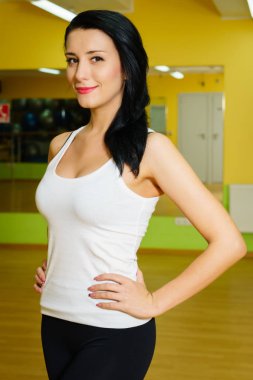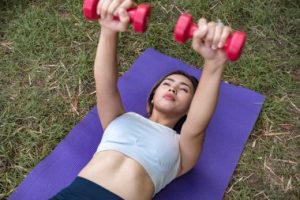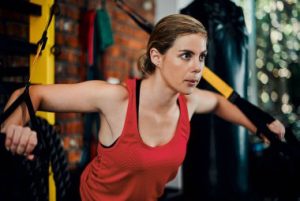
Can You Fix Uneven Breasts With Exercise (7 Important Guidelines)
Can you fix uneven breasts with exercise. This question often prompts curiosity about the potential of fitness routines to address asymmetry. When it comes to achieving body confidence, many individuals find themselves concerned about the symmetry of their breasts. Uneven breasts, a common and completely natural occurrence, can lead to feelings of self-consciousness.
But did you know that targeted exercise can be a surprising ally in your quest for balance? By focusing on specific muscles and incorporating strategic workouts, you can potentially enhance the symmetry of your breasts, boosting both your physical appearance and your self-esteem. Dive into the world of fitness to discover how you can address uneven breasts through exercise and embrace a more balanced you.

Can You Fix Uneven Breasts With Exercise
Yes, exercise can help to some extent in improving the appearance of uneven breasts, but it cannot completely fix the asymmetry. Strengthening the pectoral muscles can enhance the overall appearance and firmness of the chest. However, it’s important to have realistic expectations and understand that significant asymmetry may require other interventions.
Understanding Breast Asymmetry
Breast asymmetry is a common issue many women face, where one breast is noticeably different in size, shape, or position compared to the other. This can be due to a variety of reasons, including genetics, hormonal changes, and differences in tissue distribution. While complete symmetry is rare and natural, many seek ways to balance their appearance, often turning to exercise as a potential solution.
Role of Exercise in Balancing Breasts
Exercise plays a crucial role in toning and strengthening the chest muscles, which can help in improving the appearance of uneven breasts. Focused workouts targeting the pectoral muscles, such as push-ups, chest presses, and chest flies, can enhance muscle mass and firmness. These exercises do not change the breast tissue itself but can improve the underlying structure, making the breasts look more even. It’s important to combine these exercises with a balanced diet and proper posture to maximize results.
Popular Exercises for Chest Enhancement
Push-Ups
Push-ups are highly effective in strengthening the pectoral muscles. Variations like incline and decline push-ups can target different areas of the chest, promoting balanced muscle development.
Chest Press
Using dumbbells or a barbell, chest presses help build the upper body strength. Performing this exercise on a flat, incline, or decline bench can provide a comprehensive workout for the chest.
Chest Flies
This exercise stretches and works the chest muscles. It can be performed with dumbbells or resistance bands, ensuring even muscle engagement across the chest.
Additional Considerations
While exercise can contribute to a more balanced chest appearance, it’s crucial to manage expectations. Significant breast asymmetry may not be completely corrected through exercise alone. In such cases, other options like padded bras, inserts, or surgical procedures might be considered. Consulting with a fitness expert or medical professional can provide personalized advice and a holistic approach to addressing uneven breasts.
Understanding Breast Anatomy and Asymmetry
Overview of breast tissue composition (glandular, fatty tissue)
Understanding breast anatomy involves recognizing the complexity and variability of breast tissue and how these differences manifest in individuals. The breast is primarily composed of glandular and fatty tissue. The glandular tissue, or mammary glands, is responsible for milk production and is interspersed throughout the breast. Fatty tissue, which surrounds and supports the glandular tissue, determines the overall size and shape of the breast. The ratio of glandular to fatty tissue can vary significantly among individuals and can change over time due to factors like age, hormonal fluctuations, and body weight changes.
Types of breast asymmetry (size, shape, position)
Breast asymmetry is a common phenomenon and can be categorized into differences in size, shape, and position. Size asymmetry refers to one breast being larger or smaller than the other, a condition that can be congenital or develop due to hormonal changes, pregnancy, or breastfeeding.
Shape asymmetry involves variations in the contour or density of the breasts, which can be influenced by the distribution of glandular and fatty tissues. Position asymmetry occurs when one breast is situated higher or lower on the chest wall compared to the other, often resulting from variations in the underlying muscle and skeletal structure. Understanding these aspects of breast anatomy and asymmetry is crucial for healthcare providers in diagnosing and addressing concerns related to breast health and aesthetics.
Role of Exercise in Breast Health
Benefits of exercise for overall chest health
Exercise plays a crucial role in maintaining and improving breasts health. Regular physical activity helps to manage body weight, which is a significant factor in reducing the risk of breast cancer. Exercise also improves circulation and immune function, aiding in the early detection and fighting of potential abnormalities in breast tissue. Furthermore, exercise helps in balancing hormones, particularly estrogen, which can reduce the risk of breast cancer development.
Exercises to strengthen chest muscles (pectoral muscles)
Beyond cancer prevention, exercise supports overall chest health by strengthening the pectoral muscles, the muscles located beneath the breast tissue. Strong pectoral muscles can improve posture, enhance the appearance of the chest, and provide better support for the breast tissue, potentially alleviating back pain and discomfort associated with larger breasts.
Effective exercises to strengthen the chest muscles include push-ups, chest presses, chest flyes, and dumbbell pullovers. These exercises target the pectoral muscles, increasing muscle tone and strength. Incorporating a variety of these exercises into a regular fitness routine can lead to a firmer, more lifted chest and contribute to overall breast health. Additionally, the benefits of exercise extend to mental health, reducing stress and anxiety, which are important for overall well-being and can indirectly impact breast health by promoting a healthier lifestyle.

Exercises to Improve Chest Muscles
Types of exercises
Push-ups: variations and benefits
Improving chest muscles can be achieved through a variety of exercises that target the pectoral region, enhancing strength, definition, and overall upper body stability. Push-ups are a foundational exercise with numerous variations, such as traditional push-ups, wide-grip push-ups, and decline push-ups. Each variation engages different parts of the chest, shoulders, and triceps, offering a comprehensive workout that can be adjusted to different fitness levels.
Chest presses: using dumbbells or resistance bands
Chest presses, whether performed with dumbbells or resistance bands, are highly effective for building chest strength and muscle mass. Dumbbell chest presses allow for a greater range of motion compared to barbell presses, thus engaging the muscles more thoroughly. Resistance bands, on the other hand, provide variable resistance throughout the movement, ensuring continuous muscle tension.

Chest flies: targeting pectoral muscles
Chest flies, another essential exercise, specifically target the pectoral muscles. When performed correctly, chest flies can help improve muscle symmetry and enhance the width of the chest. Using dumbbells or a cable machine, chest flies focus on the adduction and extension of the arms, isolating the chest muscles more than presses.
Plank variations: core and chest engagement
Additionally, incorporating plank variations into a chest workout routine can significantly benefit both core stability and chest muscle engagement. Standard planks, side planks, and plank-to-push-up transitions all demand strong chest and core activation to maintain proper form and stability, promoting overall upper body endurance. These exercises, when combined into a balanced routine, can lead to significant improvements in chest muscle strength and definition.
Potential Effects of Exercise on Breast Appearance
Building muscle mass and its impact on breast appearance
Exercise can significantly influence breast appearance through several mechanisms. One of the primary effects is building muscle mass, particularly in the pectoral muscles located beneath the breast tissue. As these muscles strengthen and grow, they can provide a firmer base, potentially leading to a slight lift and more defined shape of the breasts. Although exercise cannot increase breast size since breasts are primarily composed of fatty tissue and glandular structures, it can enhance their overall appearance by improving the underlying muscle tone.
Improving posture and chest wall alignment
Regular physical activity can improve posture, which has a profound impact on how breasts are perceived. Good posture, characterized by an aligned spine and properly positioned shoulders, prevents the chest from caving inwards, thereby making the breasts appear more prominent and well-supported.
Enhancing overall breast support through muscle tone
Furthermore, exercises that target the upper back and shoulders, such as rows and reverse flys, contribute to better chest wall alignment, offering enhanced structural support. The cumulative effect of a strong upper body musculature not only supports the breasts more effectively but also helps in preventing sagging over time. Improved muscle tone from regular exercise can also enhance the firmness and contour of the chest area, giving the breasts a more youthful and uplifted appearance. Overall, while exercise cannot directly change breast size, it plays a crucial role in optimizing their appearance by enhancing the surrounding muscle structure, improving posture, and providing better support through increased muscle tone.

Limitations of Exercise in Correcting Breast Asymmetry
Genetic and structural factors influencing breast shape and size
Exercise, while beneficial for overall health and fitness, has significant limitations in correcting breast asymmetry, which is largely influenced by genetic and structural factors. The shape and size of breasts are primarily determined by genetics, meaning that inherited traits dictate the distribution of breast tissue and the underlying pectoral muscles. As a result, no amount of exercise can fundamentally alter these genetic predispositions. Furthermore, the structure of the breasts, which comprises glandular tissue, fat, and connective tissues, is not significantly impacted by exercise routines aimed at enhancing the pectoral muscles beneath the breasts.
Hormonal influences that affect breast tissue
Hormonal influences also play a critical role in breast development and asymmetry. Hormones such as estrogen and progesterone, which fluctuate during menstrual cycles, pregnancy, and menopause, can cause changes in breast size and shape that exercise cannot address. These hormonal effects are internal and systemic, thus outside the reach of localized physical activity.
Psychological considerations and body image
Beyond the physical aspects, psychological considerations and body image issues must be acknowledged when discussing breast asymmetry. Many individuals experience distress and lowered self-esteem due to perceived imperfections, which exercise alone cannot alleviate. The psychological impact of breast asymmetry can be profound, leading some to seek surgical interventions for symmetry correction. This highlights the complex interplay between physical form and mental well-being, where exercise, despite its myriad benefits, cannot resolve deep-seated concerns rooted in genetic, hormonal, and psychological domains.
Combining Exercise with Other Approaches
Consulting with a healthcare professional (plastic surgeon, physical therapist)
Combining exercise with other approaches to address breast asymmetry can be an effective strategy for many individuals. Regular exercise, particularly strength training and chest-focused workouts, can help enhance the pectoral muscles, potentially improving the appearance of mild asymmetry. However, exercise alone might not suffice for everyone, particularly in cases of significant asymmetry.
Consulting with a healthcare professional, such as a plastic surgeon or a physical therapist, is crucial to understand the underlying causes of the asymmetry and to develop a comprehensive treatment plan. Plastic surgeons can offer insights into both surgical and non-surgical cosmetic options for severe cases. Surgical interventions, like breast augmentation, reduction, or fat grafting, can provide permanent solutions to balance the size and shape of the breasts. Non-surgical options, such as fillers or fat transfer, can also offer temporary improvements without the need for invasive procedures.
Additionally, the use of supportive garments or specialized bras designed to correct asymmetry can provide an immediate, non-invasive solution to improve appearance and comfort. These bras can be tailored to add volume where needed and provide better overall support, helping to create a more balanced look. By integrating exercise with professional guidance, supportive garments, and exploring cosmetic options, individuals can find a balanced and personalized approach to managing breast asymmetry effectively.
FAQ: Can You Fix Uneven Breasts With Exercise
Q1: Can exercise help fix uneven breasts?
A1: Exercise can help improve the appearance of your chest by strengthening the underlying muscles, but it may not directly fix uneven breasts. Breast tissue itself is composed of fat and glandular tissue, which can’t be changed through exercise alone. However, targeting chest muscles with specific exercises can enhance overall symmetry and improve muscle tone.
Q2: What exercises can help with chest symmetry?
A2: Exercises that target the pectoral muscles can help improve chest symmetry. Some effective exercises include:
- Push-ups: Different variations (standard, incline, decline) can target various parts of the chest.
- Chest Press: Using dumbbells or a barbell to evenly distribute the weight.
- Chest Flyes: Performing with dumbbells on a bench to work the inner chest.
- Dumbbell Pullover: Engages the chest and helps with muscle balance.
Q3: How often should I exercise to see results?
A3: Consistency is key. Aim to include chest-focused exercises in your routine 2-3 times per week. Allow for rest days in between to let your muscles recover and grow. Results may take several weeks to months, depending on your starting point and fitness level.
Q4: Can uneven breasts be caused by muscle imbalance?
A4: Yes, muscle imbalance can contribute to the appearance of uneven breasts. If one side of your chest is stronger or more developed than the other, it can create asymmetry. Focusing on balanced muscle training can help address this issue.
Q5: Are there non-exercise methods to fix uneven breasts?
A5: Yes, other methods include:
- Surgery: Options like breast augmentation, reduction, or lift can correct asymmetry.
- Bra Inserts: Padding or inserts can create the appearance of symmetry.
- Posture Improvement: Good posture can enhance overall appearance and reduce perceived unevenness.
Q6: Should I be concerned about uneven breasts?
A6: Uneven breasts are common and usually not a cause for concern. However, if you notice significant changes or have other symptoms, it’s a good idea to consult with a healthcare professional to rule out any underlying conditions.
Q7: Can weight changes affect breast symmetry?
A7: Yes, weight gain or loss can impact breast size and symmetry. Since breasts are largely composed of fatty tissue, changes in body weight can affect their appearance.
Q8: Is it possible to achieve perfect symmetry through exercise?
A8: Perfect symmetry is rare and may not be achievable solely through exercise. While exercises can improve muscle tone and balance, natural anatomical differences often persist. Embracing your unique body is important, and striving for overall health and fitness should be the primary goal.
Q9: Are there specific tips for targeting one side more effectively?
A9: If one side is noticeably weaker, you can incorporate unilateral exercises to target that side more effectively. For example:
- Single-Arm Dumbbell Press
- Single-Arm Chest Fly
- Unilateral Push-Ups
Focusing on these exercises can help even out muscle development over time.
Q10: How can I track progress in balancing my chest muscles?
A10: Tracking progress can be done through:
- Photos: Take regular progress photos to visually assess changes.
- Measurements: Use a tape measure to track the size of each side.
- Strength Tests: Monitor improvements in strength on each side with exercises.
Conclusion
Fixing uneven breasts through exercise alone is often a misconception. While targeted exercises can enhance overall chest muscle tone, they cannot selectively alter breast size or symmetry. Uneven breasts are usually due to natural anatomical variations, hormonal influences, or developmental factors. Seeking guidance from a healthcare provider or a qualified plastic surgeon is crucial for assessing individual concerns and exploring appropriate options, which may include exercises for muscle toning alongside potential medical or cosmetic interventions for achieving desired symmetry and balance.